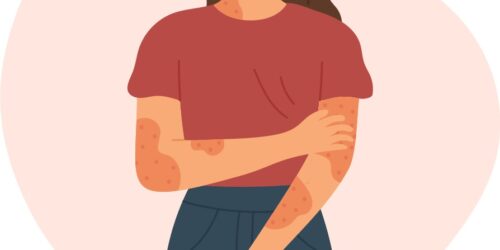Have you ever heard about histamine intoxication? Or even about food or environmental allergies? And the terms “mastocytosis” or “DAO deficiency”, do they sound familiar to you? Well, all the mentioned cases have a common denominator: they cause an excess of histamine in plasma that gives rise to many possible side effects. However, the key will be to know the mechanisms involved in each of the situations cited in order to know what measures we have to take.
When there is a disproportion between the ingested or released histamine from the cells that store it in the body, as well as the ability to metabolize it, its accumulation in plasma occurs and, consequently, adverse effects appear. This accumulation may be due to different reasons:
- When there is an acute excess in histamine intake, histamine intoxication occurs associated with the consumption of foods with very high levels of this amine. This situation is due to the fact that the metabolization mechanisms are insufficient, even though the individual is healthy and does not present any type of pathology associated with histamine. As with other food poisoning, these appear in the form of outbreaks that affect all or most of the consumers of a certain food, whose histamine content is excessively high. In reference to the symptomatology, this can become intense. In this sense, the most frequent food poisonings in Spain are due to Campylobacter, Salmonella, Escherichia coli and Listeria. This last one was a clear example in the summer of 2019, when 548 cases were reported. Listeriosis is one of the food poisoning that causes more serious illnesses, with around 17% of mortality rate and that produces more cases in people over 64 years of age. And, how can we prevent histamine poisoning? Well, proper preservation of food temperature and good hygiene in handling it will be two fundamental factors to avoid giving rise to this situation.
- Another cause of histamine accumulation is the case of a food or environmental allergy, where there is a reaction of the immune system that occurs shortly after having eaten a certain food. Allergy can cause different signs and symptoms: digestive problems, hives, inflammation of the respiratory tract or other more serious ones, such as an anaphylactic attack. In this last situation, use self-injectable epinephrine would be necessary. The next time, even a small amount of that food is eaten, IgE antibodies will detect it and signal the immune system to release histamine along with other chemicals into the blood. These substances will be responsible for the appearance of allergy symptoms. Most food allergies are triggered by certain proteins present in the following foods: shellfish, crustaceans, nuts, fish, eggs, cow’s milk, wheat, soybeans and different fruits such as strawberries or peach skin, among others. In this sense, we will have to pay special attention to the food that cause us allergy in order to avoid it, as well as those that may have been in contact with it due to cross contamination.
- However, it is worth to highlight a less common situation (1 in 10,000 people suffer from it), but it is also important to mention. This is mast cell activation or mastocytosis. Its name comes from mast cells, which originate in the bone marrow from where they pass to other tissues and participate in allergic processes, inflammation and also influence the body’s defenses. The cause of mastocytosis is due to an abnormal increase in the number of mast cells in various areas of the body. These generate histamine, and when it accumulates in large amounts it mainly affects in the skin (cutaneous mastocytosis) or in other parts of the body (systemic mastocytosis). In this sense, the treatment should be focused on avoiding those factors that trigger the activation of mast cells (physical/emotional agents, use of certain drugs…) and a low-histamine diet can also be helpful.
- When exists a DAO deficiency, there is a malfunction of the histamine degradation systems; either of genetic origin, pathological (inflammatory intestinal diseases) or due to pharmacological blockade of the enzymes involved in metabolization (mainly, the enzyme diamine oxidase, DAO). Consequently, an excessive accumulation of histamine is generated, activating different receptors in the body. Unlike allergies, the appearance of symptoms is not linked to the consumption of a specific product, but can be associated with a wide range of foods with variable histamine content. This fact represents a difficulty in establishing a maximum tolerable dose. For this reason, nowadays, there is still no clear consensus on this value. In this way, the measures to be considered should be aimed at a personalized low-histamine diet and other amines that also favor its accumulation and, gradually, expand the variety, quantity and frequency of consumption of said foods. Treatment also includes DAO enzyme supplementation in the vast majority of cases.
Thus, it is important to make a correct diagnosis of the reason why there is an increase in histamine levels. Therefore, we will be able to design an optimal treatment, individualized for each case and always by the hands of a one dietitian-nutritionist.
If you want us to advise you in a personalized way, either in our Barcelona nutrition centre or by video conference from anywhere in the world, contact us and we will help you
Bibliography
Ando T, Kashiwakura JI, Itoh-Nagato N, Yamashita H, Baba M, Kawakami Y, Tsai SH, Inagaki N, Takeda K, Iwata T, Shimojo N, Fujisawa T, Nagao M, Matsumoto K, Kawakami Y, Kawakami T. Histamine-releasing factor enhances food allergy. J Clin Invest. 2017 Dec 1;127(12):4541-4553. doi: 10.1172/JCI96525. Epub 2017 Nov 13. PMID: 29130935; PMCID: PMC5707161.
Comas-Basté O, Sánchez-Pérez S, Veciana-Nogués MT, Latorre-Moratalla M, Vidal-Carou MDC. Histamine Intolerance: The Current State of the Art. Biomolecules. 2020 Aug 14;10(8):1181. doi: 10.3390/biom10081181. PMID: 32824107; PMCID: PMC7463562.
Krishnaprasadh D, Levasseur K. Mastocytosis. Pediatr Rev. 2021 Aug;42(8):468-470. doi: 10.1542/PIR.2020-0108. PMID: 34341090.






